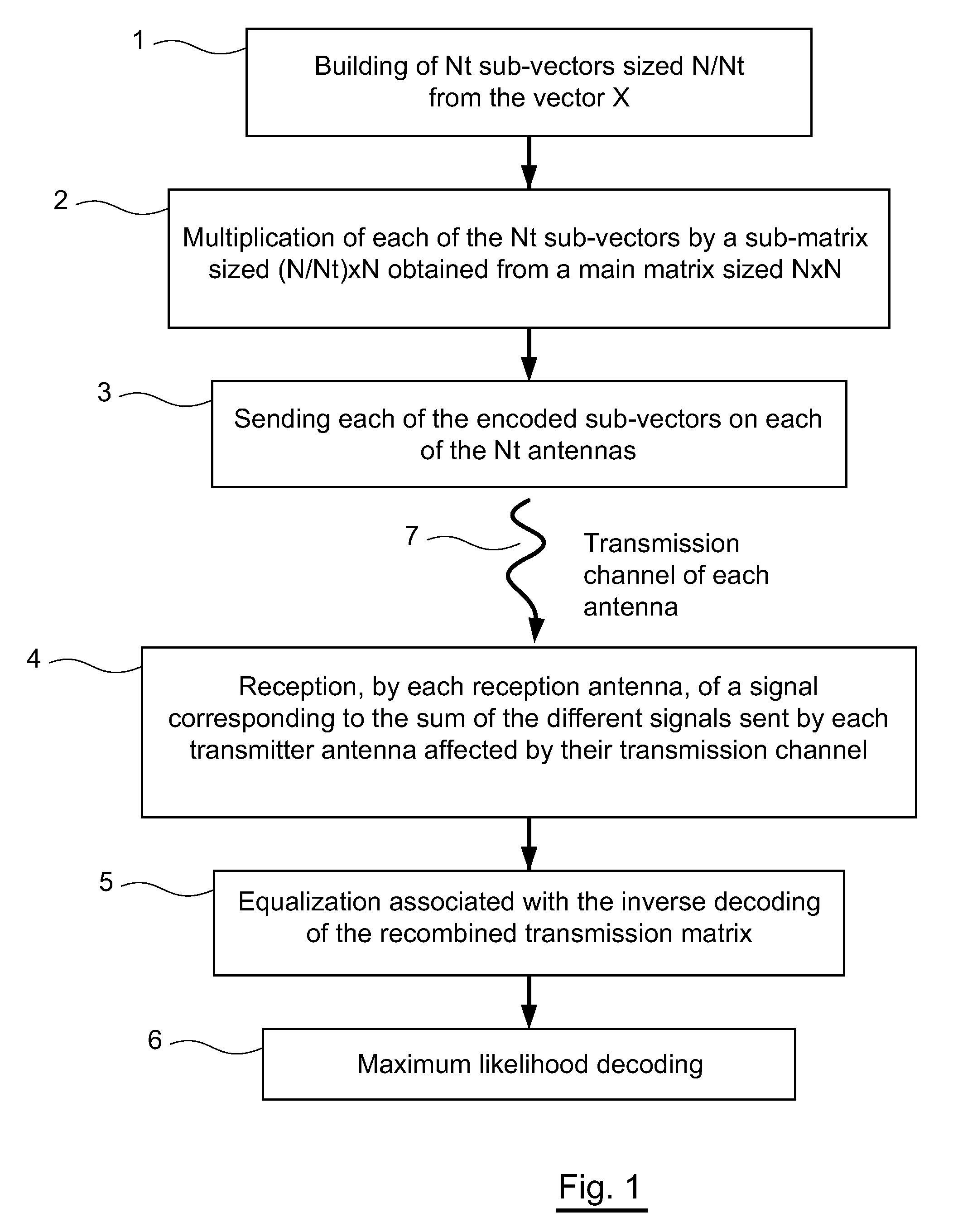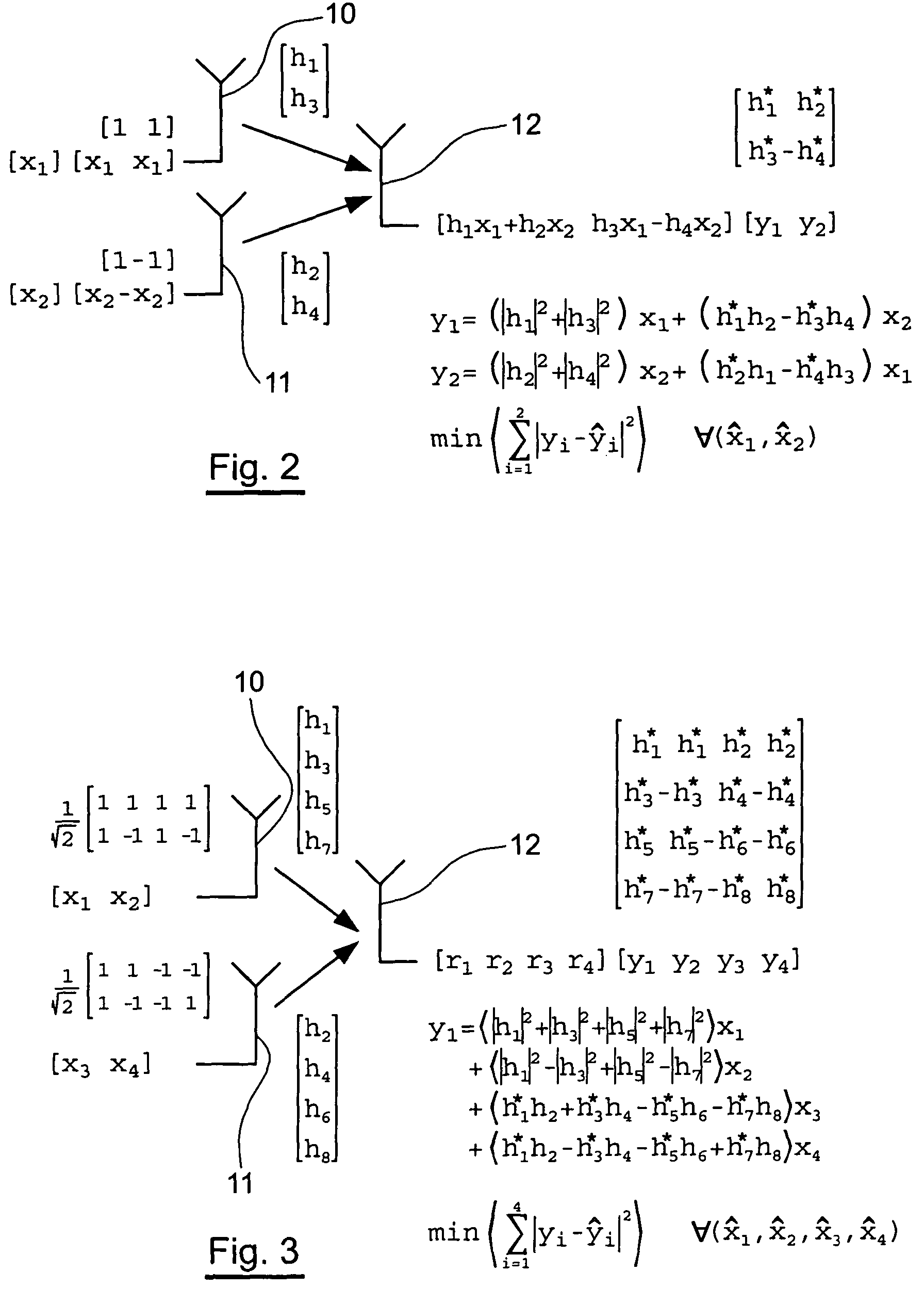Method for the multiple-antenna transmission of a signal by space-time block codes, corresponding reception method and signal
a space-time block and signal technology, applied in the field of wireless digital communications, can solve the problems of placing heavy constraints on the sending/receiving system, unable to exploit the diversity of the channel, and the solution to be placed, so as to achieve better utilization of channel diversity, less system constraints, and high signal-to-noise ratio
- Summary
- Abstract
- Description
- Claims
- Application Information
AI Technical Summary
Benefits of technology
Problems solved by technology
Method used
Image
Examples
Embodiment Construction
[0057]The general principle of the invention relies on a novel type of space-time code for a multiple-antenna system. The particular building of these codes relies on an orthogonal or unitary matrix construction for each transmitter antenna, the use of these matrices enabling a separation of the signals sent by each antenna.
[0058]FIG. 1 presents the different steps implemented during the sending and reception of a signal according to the invention.
[0059]At encoding, X is considered to be a vector sized N containing the N symbols to be sent. A system comprising a number Nt of transmitter antennas is also considered. The novel space-time codes proposed by the invention are conceived as follow:
[0060]In a first step 1, the vector X containing the symbols to be sent is divided into Nt sub-vectors sized N / Nt.
[0061]Then, in a step 2, each of the sub-vectors sized N / Nt is multiplied by a different matrix sized (N / Nt)×N. These matrices are obtained from a real Hadamard matrix, a complex Hada...
PUM
 Login to View More
Login to View More Abstract
Description
Claims
Application Information
 Login to View More
Login to View More - R&D
- Intellectual Property
- Life Sciences
- Materials
- Tech Scout
- Unparalleled Data Quality
- Higher Quality Content
- 60% Fewer Hallucinations
Browse by: Latest US Patents, China's latest patents, Technical Efficacy Thesaurus, Application Domain, Technology Topic, Popular Technical Reports.
© 2025 PatSnap. All rights reserved.Legal|Privacy policy|Modern Slavery Act Transparency Statement|Sitemap|About US| Contact US: help@patsnap.com



